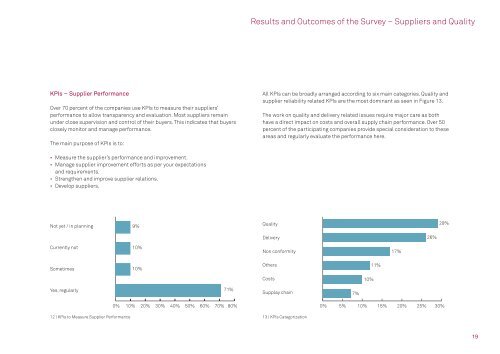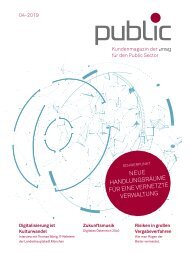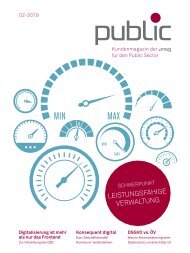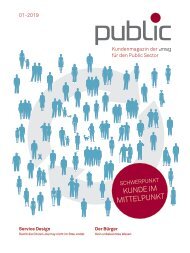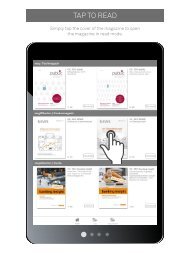01 | 2015 msg systems study
Sourcing in China
Sourcing in China
You also want an ePaper? Increase the reach of your titles
YUMPU automatically turns print PDFs into web optimized ePapers that Google loves.
Results and Outcomes of the Survey – Suppliers and Quality<br />
KPIs – Supplier Performance<br />
Over 70 percent of the companies use KPIs to measure their suppliers’<br />
performance to allow transparency and evaluation. Most suppliers remain<br />
under close supervision and control of their buyers. This indicates that buyers<br />
closely monitor and manage performance.<br />
The main purpose of KPIs is to:<br />
All KPIs can be broadly arranged according to six main categories. Quality and<br />
supplier reliability related KPIs are the most dominant as seen in Figure 13.<br />
The work on quality and delivery related issues require major care as both<br />
have a direct impact on costs and overall supply chain performance. Over 50<br />
percent of the participating companies provide special consideration to these<br />
areas and regularly evaluate the performance here.<br />
••<br />
Measure the supplier’s performance and improvement.<br />
••<br />
Manage supplier improvement efforts as per your expectations<br />
and requirements.<br />
••<br />
Strengthen and improve supplier relations.<br />
••<br />
Develop suppliers.<br />
Not yet / in planning<br />
9%<br />
Quality<br />
29%<br />
Delivery<br />
26%<br />
Currently not<br />
10%<br />
Non conformity<br />
17%<br />
Sometimes<br />
10%<br />
Others<br />
11%<br />
Costs<br />
10%<br />
Yes, regularly<br />
71%<br />
Supplay chain<br />
7%<br />
0% 10% 20% 30% 40% 50% 60% 70% 80% 0% 5% 10% 15% 20% 25% 30%<br />
12 | KPIs to Measure Supplier Performance 13 | KPIs Categorization<br />
19


